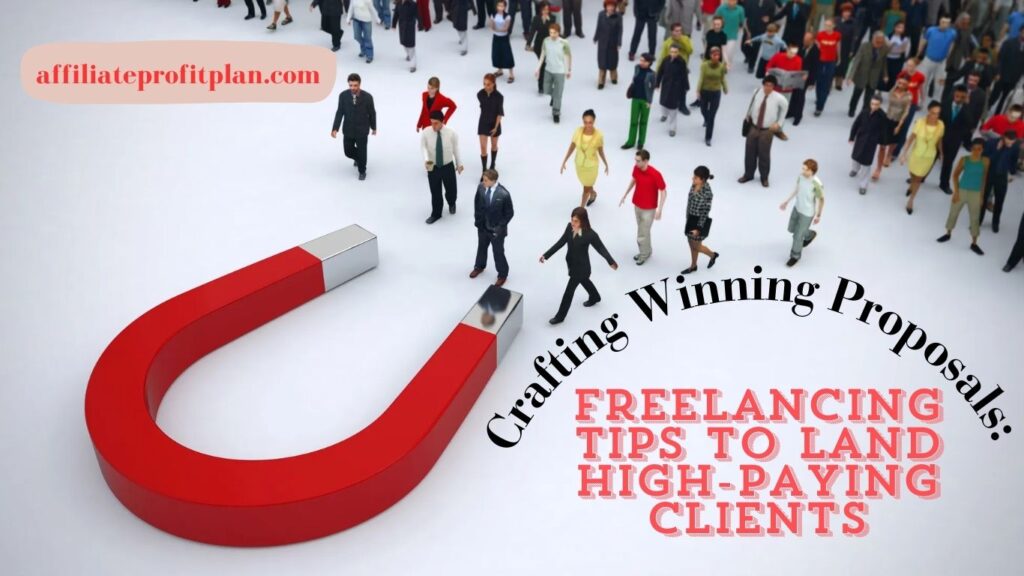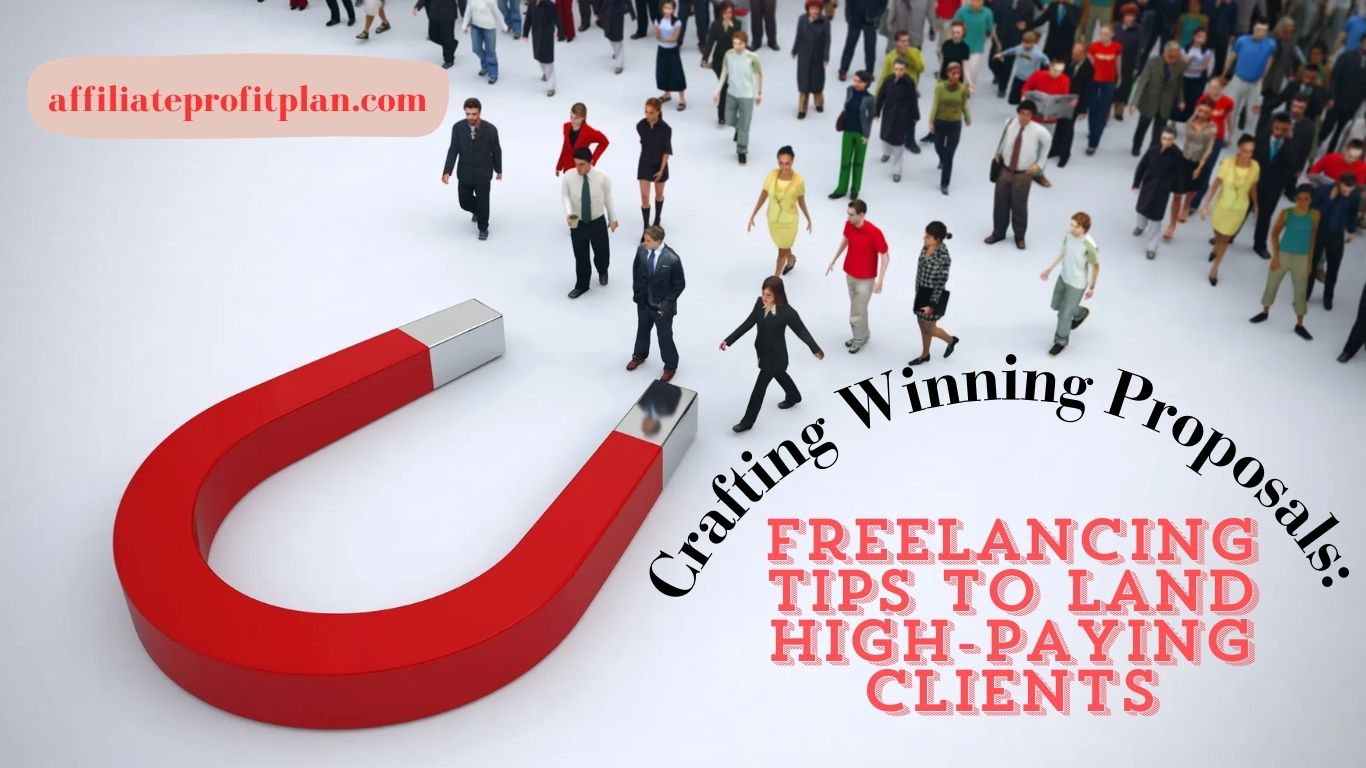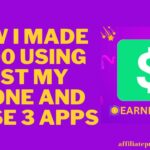Welcome to my article Crafting Winning Proposals: Freelancing Tips to Land High-Paying Clients. If you’re a freelancer, you know the drill: you spot the perfect project, fire up your laptop, and pour your heart into crafting a proposal that you know will land you that high-paying client. But somehow, after hitting “send,” you hear… crickets. It’s frustrating, right? You’ve got the skills, the portfolio, and the passion, but why aren’t clients jumping at the chance to work with you? Well, my friend, it might not be your talent that’s the issue—it could be how you’re pitching yourself.
Whether you’re just starting out or you’re a seasoned pro looking to land bigger projects, the tips here will help you tailor your proposals so you don’t just blend into the background. Instead, you’ll stand out like a bright, shiny object in a sea of generic submissions—and maybe even make your clients wonder why they hadn’t hired you sooner. Ready to transform your proposals into client magnets? Let’s dive in!
Access My Proven Blueprint for $50-$100 Daily Income – Watch This FREE Video Now >>>

Understand Your Client’s Needs Like a Pro
Alright, let’s get real for a second. You might be an expert in your field, but if you’re not paying attention to what the client actually needs, your proposal will be about as effective as a screen door on a submarine. Clients don’t just hire freelancers because they’re good at what they do—they hire you because they need a solution. So, step one in crafting a winning proposal? Understanding exactly what that solution is.
Start by thoroughly reading the job description. I mean, really reading it. Don’t just skim over it hoping to pick up a few buzzwords. Get into the nitty-gritty—what are their specific pain points? What’s the underlying problem they’re trying to solve? Maybe they want to increase their website traffic, improve their brand’s online presence, or even just get their social media posts to stop looking like a random assortment of cat memes. Whatever the case, figure out what makes them tick. Understanding their needs will allow you to tailor your proposal in a way that speaks directly to their problems.
If you’re unsure about some of the details, don’t be afraid to ask questions. Nothing screams “amateur hour” like assuming you know what the client wants without verifying the facts. A simple message like, “I noticed you mentioned you need help with A, B, and C—can you tell me a bit more about what success looks like for you in this project?” can go a long way. Not only does it show you’re genuinely invested in the project, but it also helps you avoid wasting time on assumptions.
Think of it like a first date. You wouldn’t go into a date just talking about yourself (unless you’re really, really into self-help books), so don’t make your proposal all about you. Instead, put the focus on the client’s goals, challenges, and vision. This approach will have clients nodding in agreement before they even finish reading your proposal. And trust me, they’ll appreciate the effort you’ve put into understanding their needs. In turn, it’ll make them feel like you’re the perfect person to tackle their project—and that’s half the battle won.
Personalize Your Proposal for Maximum Impact
Alright, let’s face it: the days of sending out cookie-cutter proposals are over. If you’re still using the “one-size-fits-all” method, you might as well be sending out emails that say, “Dear Sir/Madam, I’m a freelancer, and I do stuff.” Spoiler alert: that’s not going to land you a high-paying client. Personalization is key, my friend, and it’s the secret ingredient to making your proposal stand out in a sea of generic submissions.
First off, let’s talk about addressing the client by name. Yes, it sounds basic, but you’d be surprised how many freelancers forget this step. “Dear [Client’s Name]” is so much more inviting than “Dear Hiring Manager,” don’t you think? But personalization goes beyond just using the right name—it’s about demonstrating that you’ve taken the time to understand their specific project and goals. So, take a few moments to really digest the job description, and reference details that show you get it. For example, if they’re looking for a logo redesign for their eco-friendly brand, mention that you’ve worked on similar projects and understand the importance of sustainability in their messaging. Bonus points if you can drop a tidbit of knowledge about their industry—it’ll show that you’ve done your homework.
Next, let’s talk about tone. This is where you get to show off your personality (without sounding like you’re auditioning for a stand-up comedy show, unless that’s your niche, in which case, go for it). Align your writing with the client’s vibe. If they’re a laid-back tech startup, you can be a little more casual and fun. If they’re a corporate law firm, tone it down and keep it professional. Matching the client’s tone builds rapport and shows that you’re a good fit for their team dynamic. Think of it as a verbal handshake—firm, but with just the right amount of warmth.
Finally, don’t forget the little things that make a big difference. Mention specifics from their job listing. For example, if they’ve mentioned their tight deadline, acknowledge it and reassure them that you’re the kind of freelancer who thrives under pressure. Or if they’ve shared a bit about their brand’s mission, weave that into your proposal and show how you can help them achieve their vision. The more relevant details you can reference, the better your proposal will resonate.
At the end of the day, a personalized proposal makes the client feel like they’re not just another checkbox on your to-do list. It shows you’re invested in their project, which can be the deciding factor when they’re choosing between you and a dozen other freelancers. So, put in the effort, tailor each proposal to the client’s specific needs, and watch those high-paying gigs start rolling in. After all, the more you personalize, the more likely you are to be their perfect match.
Showcase Your Expertise Without Overloading
The art of tooting your own horn. As a freelancer, you’ve probably been told more times than you can count that you need to sell yourself, but how much is too much? Sure, you want to show off your expertise—after all, that’s what you’re getting paid for—but nobody wants to read through a 10-page memoir of your qualifications. Think of it like the appetizer menu at a fancy restaurant: you want just enough to whet the client’s appetite, but you don’t need to serve up a full seven-course meal.
Access My Proven Blueprint for $50-$100 Daily Income – Watch This FREE Video Now >>>
First, focus on relevance. No one needs to know every single project you’ve worked on since you picked up a camera, wrote your first line of code, or designed your first logo. Instead, pick a few standout examples that are directly related to the project at hand. If the client is looking for someone to revamp their website, don’t waste valuable proposal real estate talking about your previous work in app development (unless that’s somehow part of the project). Instead, highlight your best web design work, share how you helped clients increase conversions, or explain how you took a website from “meh” to “wow.” The key here is quality over quantity.
When it comes to showcasing your expertise, it’s also important to include specific results. Clients are more likely to hire you if they know that your work gets them results. For instance, don’t just say, “I design beautiful websites.” Instead, say something like, “I designed a website that increased my client’s sales by 25% in the first three months.” Numbers don’t lie, and a concrete example of success speaks volumes more than vague descriptions of your design skills. Bonus points if you can include testimonials or case studies from happy clients who can back up your claims.
But here’s the trick—don’t overwhelm the client with a wall of text. Keep it concise, but packed with punch. A short, well-written paragraph that highlights your most relevant experience and results is far more effective than a lengthy biography or list of every client you’ve ever worked with. Think of your proposal as a good elevator pitch: you want to impress the client with just enough to get them intrigued, and then leave them wanting more.
Remember, showcasing your expertise is about showing the client that you’re the one for the job, but it’s not a contest to see who has the longest resume. Keep it focused, results-oriented, and client-centered, and your proposal will do the heavy lifting for you.
Present Clear Deliverables and Value
Here’s the thing about freelancing: clients don’t just hire you for your sparkling personality (though I’m sure you’re lovely). They hire you because they need something—whether it’s a website, a logo, a set of social media posts, or a complete marketing overhaul. They want results. So, when crafting your proposal, presenting clear deliverables and the value you bring to the table isn’t just important—it’s critical. Without it, you risk coming across like a magician promising the world but leaving the client wondering if they’ll ever see the rabbit—or their money—again.
The key to delivering clear value? Be specific. Instead of vague statements like, “I’ll help improve your website,” get into the weeds a bit: “I’ll redesign your homepage to be more user-friendly and optimized for conversions, ensuring a seamless experience for visitors.” It’s specific, it’s actionable, and it paints a picture for the client of exactly what they’re getting. The more you can outline exactly what you’ll do, the more confident the client will feel in their decision to hire you.
Now, let’s talk about deliverables—the things that the client will actually receive at the end of the project. This is where many freelancers drop the ball. Saying, “I’ll provide you with a new logo” is nice, but it’s a little too open-ended. Try breaking it down further: “You’ll receive three initial logo concepts, with two rounds of revisions to ensure it perfectly aligns with your brand’s vision.” This makes the scope of the project crystal clear, so there are no surprises later on. Clients love transparency, and when they see exactly what they’ll get, they feel more secure in their investment.
But here’s the kicker: delivering value isn’t just about the technical stuff—it’s about the impact of what you do. The client wants to know that their investment in you will lead to tangible results. Will that logo increase brand recognition? Will the website redesign result in higher traffic? Will your content help them get more leads? These are the things that will have them nodding their heads and clicking the “hire” button. So, after you’ve laid out your deliverables, don’t be shy—remind them how your work will make their life easier or their business more profitable.
Lastly, make sure to manage expectations. If there’s a possibility that a deliverable might take longer than anticipated, or if there are limitations to what you can achieve within the proposed timeline, communicate it upfront. Managing expectations goes a long way in preventing misunderstandings later on and ensuring you and your client are on the same page.
In the end, the more you can break down exactly what you’ll be delivering, and the more you can tie those deliverables to the value they’ll receive, the more likely you are to land the job. It’s simple: clear deliverables + strong value = a client who feels confident in choosing you over the competition.
Seal the Deal with Professionalism
Now, we’ve come a long way: you’ve crafted a personalized proposal that speaks directly to the client’s needs, showcased your expertise without sounding like a walking resume, and laid out clear deliverables that highlight the value you bring to the table. But here’s the clincher—no matter how brilliant your proposal is, the way you close the deal can make or break the entire process. If you’re still relying on a generic, “Let me know if you’re interested,” to wrap things up, it’s time to level up. This is where professionalism comes in, and trust me, it’s the icing on the cake.
Professionalism doesn’t mean being stiff or robotic—it’s about showing that you take the project seriously and value the client’s time and money. Start by ensuring your proposal is clear, polished, and free of typos. Yes, it’s basic, but you’d be shocked at how many freelance proposals stumble over something as simple as spelling errors or broken links. Clients are busy, and they’re assessing you not just based on your skills, but also on your attention to detail. A well-crafted proposal shows that you’re organized and reliable. If they can’t trust you to send a clean, well-thought-out proposal, how can they trust you with their project?
Next, make sure your communication is top-notch. Respond to any inquiries promptly and respectfully—show that you’re accessible and open to discussions. But here’s the thing: don’t over-communicate. If a client has already reviewed your proposal and seems interested, don’t barrage them with follow-up emails asking if they’ve made a decision yet. That’s a surefire way to lose any chance of closing the deal. Professionalism also means knowing when to step back and give the client the space they need to make a decision. After all, you want them to feel like they’re choosing you because you’re the right fit, not because you’ve worn them down with constant reminders.
One of the best ways to seal the deal is by offering a clear call to action. Something simple, like, “I’m excited about the possibility of working together. If you’d like to move forward, I can send over the contract and get started on the project right away.” This shows confidence without being pushy. You’re ready to get started, and you’re giving them an easy next step to take. The key here is confidence, not arrogance—clients want to feel that you’re sure of your abilities, but also that you’re adaptable and easy to work with.
Finally, wrap it up with respectful professionalism. If the client decides to pass on your proposal, thank them for their time and let them know you’d be happy to work with them in the future if their needs change. It’s all about leaving the door open for future opportunities. After all, freelancing is a long game, and relationships built on mutual respect are the ones that keep paying off in the long run.
In the end, sealing the deal with professionalism is about showing that you’re reliable, respectful, and ready to get to work. If you do this right, clients will be eager to move forward with you—and will trust that you’ll handle their project with the same level of professionalism you’ve shown throughout the proposal process. So, go ahead, send that proposal with confidence, and watch the high-paying clients roll in.
Conclusion: Turning Your Proposal Into a Client-Getting Machine
And there you have it! Crafting a winning proposal isn’t just about sending a document—it’s about creating a compelling narrative that shows potential clients exactly why you’re the best person for the job. Think of your proposal as your first impression, your handshake, your elevator pitch, and your portfolio all wrapped into one neat little package. When you understand your client’s needs, personalize your pitch, showcase your expertise without being obnoxious, present clear deliverables and value, and seal the deal with professionalism, you’re not just sending a proposal—you’re offering a solution.
Access My Proven Blueprint for $50-$100 Daily Income – Watch This FREE Video Now >>>
Remember, a well-crafted proposal isn’t just about impressing clients—it’s about making them feel confident that they’re making the right choice in hiring you. When clients feel understood, valued, and confident in your abilities, they’re more likely to say “yes” to working with you. So, take the time to perfect your proposals, and don’t be afraid to show off a little bit of your personality along the way (after all, you’re a human, not a robot!).
Freelancing can be a tough game, but with the right approach to proposals, you’ll be ahead of the curve and ready to land those high-paying clients. So go ahead, take these tips, and start turning those proposals into signed contracts—and maybe even a few high-fives from happy clients. Your freelance career will thank you for it!
Thanks a lot for reading my article on “Crafting Winning Proposals: Freelancing Tips to Land High-Paying Clients“ till the end. Hope you’ve helped. See you with another article.










